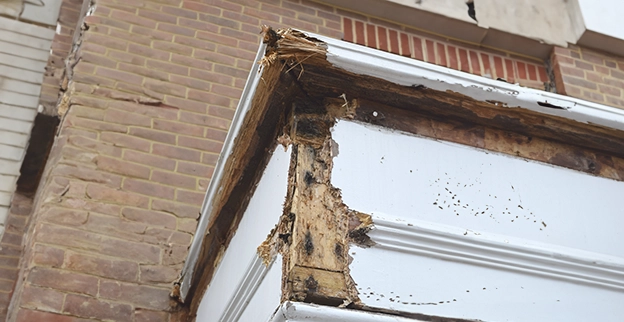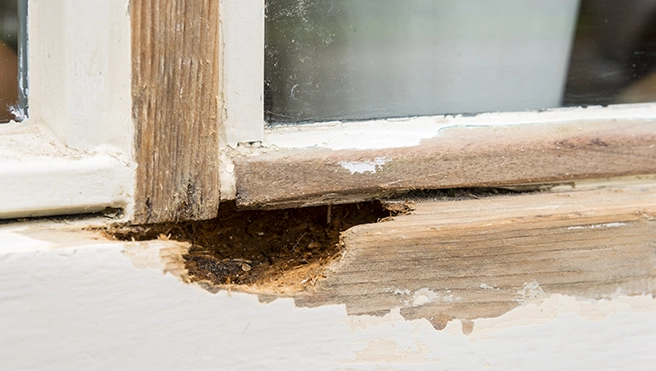Wood is commonly used in construction. From your home's structure to your deck to your fence, wooden structures are everywhere. And even if you use pressure-treated wood, there's still a risk of wood rot developing due to damp conditions or exposure to moisture. That's why you need to be able to identify wood rot when it occurs, so you can take the appropriate steps and book a wood rot repair in South Bend, IN.
However, it's important to know that there are two main types of wood rot: wet rot and dry rot. These two types of rot require different treatment methods and wood rot repair methods. Both, though, can still cause extensive damage if left untreated. If the proper conditions are met, your wood can develop common types of wood rot and require potentially costly repairs. That's why you need to know what to look for to book a wood rot repair in South Bend, IN.
Defining Wet Rot
Wet rot is a type of fungus that feeds on wood. It sustains itself by feeding on the nutrients and moisture in wood, but it also tends to cause plaster, wallpaper, and carpets to decay as well. Wet rot spreads by releasing spores, which then cause more fungus to grow when they find an appropriately damp wooden surface.
Now, it's important to know that wet rot might not be as damaging or destructive as dry rot, but it still needs to be treated immediately as it can affect your home's structural integrity.
Types of Wet Rot
There are two common types of wet rot, which are mostly identified by their color.
- White Rot: As evidenced by its name, the decay has an appearance that looks white. With white rot, you're likely to notice a soft, spongy feeling when you touch the wood.
- Brown Rot: Brown rot often looks similar to the affected wood. Brown rot typically feeds on the sugars and cellulose present in the wood, which gives it a dark brown appearance.
The Causes of Wet Rot
Often, wet rot (which is a fungal growth) is caused by exposure to excess moisture. You might start noticing signs of wood rot or wood decay in your solid wood if any of the following have occurred recently:
- Roof leaks
- Leaky pipes
- Leaky or blocked gutters
- Shower trays or around your bathtub
- Moisture penetrating through your home's walls
- Condensation
Defining Dry Rot
Dry rot is the more serious form of fungal decay that affects wooden structures. As a form of rot, it attacks the wood itself and digests the parts of the wood that lend it its strength and durability. Typically, it spreads without a source of moisture as it generates its own by digesting the wood. Once it begins to spread, it causes severe structural damage.
You must arrange for a professional inspection should you suspect that you have dry rot. It needs to be treated quickly. The most common result of leaving it untreated means a costly repair, as you'll need to remove and replace all of the affected wood.
The Causes of Dry Rot
The moisture content within the wood that allows for dry rot to develop is often because of some sort of fault with your home. Dry rot is most often caused by the following:
- Leaking gutters and downspouts
- Penetrating water, creating high moisture content within the wood
- Poor ventilation
- Rising damp conditions






